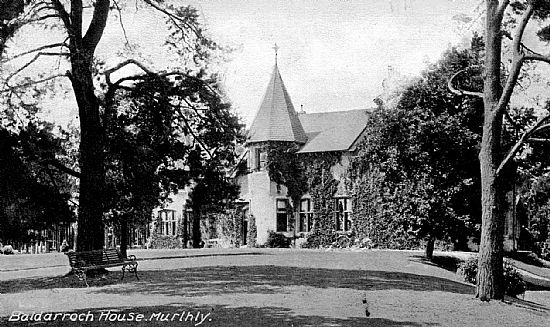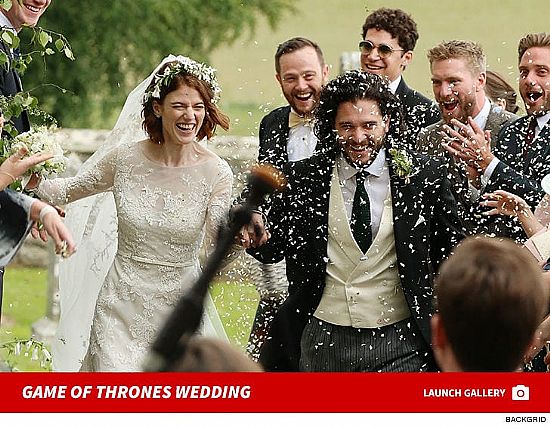The Baldarroch Murder
Added on 30 April 2019

When I started researching what happened at Baldarroch House on the evening of Friday 16th January 1925, and its aftermath, I thought I didn't know anything about it.
Then I recalled a conversation from a quarter of a century ago. When first finding out about Murthly. Someone told me of a country house murder in the 1920s. He said the strange thing was for hours after the event nobody knew what had happened, it was all rumour and speculation. But some folk immediately assumed 'the Major' had shot the local doctor, Burgess: being not at all happy that Burgess was courting one of his daughters. And there was that old class thing, the deference. Some thought ill of Burgess for getting above himself.
Here's what really happened. Maybe.
Major William Frederick Middleton bought the Baldarroch estate from Colonel Richardson of Ballathie in 1891. There was then a smaller house than the one illustrating this article, called Baldarrie. In addition, the estate came with three farms – Mill of Derry, Wester Brownmuir and Easter Brownmuir – houses at Old Ninevah, Muirhead, Broadrisk, as well as stables, policy grounds, woodlands and some shooting. However, fishing rights to the south bank of the Tay still belonged to Murthly estate.
Middleton quickly moved to buy additional woodland to have a buffer between his new purchase and the land to the north of Easter Burnbane and present day Kinclaven Crescent, which was being farmed by patients at Murthly Asylum. Walter Steuart Fothringham agreed to an independent valuation of the woodland and sold it in a neighbourly fashion. But retained right of access to the riverbank.
William Middleton (b. 1852) was the son of John Middleton, a 'landed proprietor' from the west of Scotland who leased Kinfauns Castle for many years. He was sent to Eton and on his return to Perth brought with him an abiding love of cricket. Quickly a stalwart and then captain of Perth Cricket Club, he was a member of the team that famously trounced a visiting M.C.C. X1 in 1876.
He married Caroline Alice Leslie, from one of the ancient families of Aberdeenshire, in 1884.
There isn't a photo of that wedding. But the most recent Leslie to get married from Warthill House in Rayne, where Caroline grew up, is that well known Wildling, Rose Leslie . . .
 William and Caroline seemed to have started married life in Bellwood House, then one of the most splendidly situated mansions on the south facing slope of Kinnoull Hill. (It was recently bought by Brian Souter, reputedly for £1m.)
William and Caroline seemed to have started married life in Bellwood House, then one of the most splendidly situated mansions on the south facing slope of Kinnoull Hill. (It was recently bought by Brian Souter, reputedly for £1m.)
William and Caroline had five children: John Henry b. 1885; Helen b. 1886; Esme b. 1888; and the twins Winifred & Violet b. 1891.
John Henry seems to have been hefted to the estate, and to further his ambition to manage it productively went to the Royal Agricultural College in Cirencenster, where he gained a diploma in 'practical farm management' in 1908. His career as a farmer was interrupted by the War. He joined the 2/6th Black Watch, a second line unit formed in 1914. When it was disbanded in 1917 he transferred to the 9th Battalion, which had seen a lot of action in France and was being brought back to strength at a camp just outside of Montrose. Promoted to captain, he was put in charge of training 'bomb sections'.
There was one of those hellish training ground accidents when a bomb exploded prematurely. John survived, but at the cost of an eye and considerable facial disfigurement. Thereafter, when out in public he invariably wore a mask covering one half of his face.
Caroline Middleton died suddenly, at the breakfast table, on 29 April 1917. We shouldn't jump to conclusions. But it is only natural to suspect her death was in some way connected to the shock on hearing of John's injuries.
Evidence given later suggests that Major Middleton never really recovered from his wife's death. His health deteriorated through the 1920's, and he suffered a stroke which severely affected his left arm. The registered medical practitioner for the area at the time was Dr Robert Burgess. He was born in 1872 in Aberdeen, the son of a tailor. Robert and two brothers made the most of the public education system to gain places at Aberdeen University, and all three qualified as doctors. By the end of the Great War he was well-established in Stanley, having succeeded Dr McMillan.
Robert lost his wife in 1923, to a duodenal ulcer.
As he later testified, Dr Burgess was a frequent visitor to Baldarroch throughout 1924 and into 1925 as Major Middleton's mental health deteriorated.
On Friday 16th January 1925 John Middleton returned from Perth Mart, with Esme, in the early evening. A short time later Esme and the twins, Winifred and Violet, heard a bang and on investigating found their brother mortally wounded in the passage leading to a bathroom. Dr Burgess reported that John was already dead by the time he arrived.
However, it was some hours before the police were called. And it was after midnight when a reporter from the Perthshire Advertiser was 'phoned by his editor and told to get out to Murthly sharpish. His account, filed at 2am, said 'various rumours were afloat but it was impossible to get to the bottom of any of them'. The rumours being that Captain Middleton had taken his own life, and that he had been shot by his father. Our correspondent missed any local references to Dr Burgess.
John Henry Middleton's body was left where he fell, until the police doctor arrived mid-morning on Saturday to carry out a brief post-mortem. Throughout this deeply distressful time Dr Burgess seems to have quietly taken charge. Esme and the twins fled to their rooms in distress. And it was left to Burgess to summon all the servants and break the news to them.
Major Middleton was arrested late on the Saturday and taken 'in a pathetic state' to the Sheriff Court Buildings in Perth. He was examined in the office of the procurator-fiscal, Mr Howman, by three doctors, including Dr Burgess, found by them to be in no state to be questioned, and so was remanded to Perth Prison.
Captain Middleton was laid to rest on the 20th of January. Although the funeral service was very private, immediate family only in Baldarroch, some 25 cars followed the hearse the three miles to the small road leading into Kinclaven churchyard. There the hearse stopped and the coffin was taken and placed on a horse drawn cart for the final stage: “Typically Highland, the obsequies from this point were deeply impressive. At a slow pace the horses drew their sacred load followed by about one hundred mourners now on foot.”
At the graveside there was another short service.
Major Middleton was committed to a High Court trial at a short hearing on the 24th January. Significantly, the procurator-fiscal pressed for the severest charge.
The indictment read: 'William Frederic Middleton . . . the charge against you is that on 16th January 1925 at Baldarroch House, Murthly you did discharge a loaded shotgun at John Henry Middleton, your son, and did shoot him, and did murder him.'
He was deemed unfit to plead in his own defence.
He next appeared at the High Court in Perth on 24th March. Having been held all the while in the Lunatic Department of Perth Prison.
Lord Murray, presiding, moved to hear medical witnesses only. And there was no jury. A number of doctors were called to testify, beginning with Dr Burgess as the family medic, and including Dr Bruce, Medical Superintendent of Murthly Asylum. The latter confirmed that Major Middleton was seriously delusional, continually heard voices, and was exaggeratedly worried that all his wealth was being stolen from him. Dr Bruce added that Major Middleton had not fully recovered from a debilitating stroke, and was very weak on his left side.
None of the medical opinion offered any reason or explanation as to why he should have taken a heavy shotgun from the gun room, or how, and shot his son.
Lord Murray said the 'occurrence' was distressing. He ordered Middleton to be detained at His Majesty's pleasure, and signed off by saying: ' It might be some satisfaction to those who suffered that the element of criminality was entirely absent'.
The Sunday Post covered the hearing (trial would be too strong a word) with typical tact and empathy: 'INSANE LAIRD IN COURT' blared the headline.
We will not know the full story for a while yet as Judicial Court papers are sealed for 100 years. What we do know is that, while Lord Murray was giving his opinion that 'no evidence of criminality' had been shown, the Deputy Advocate and Procurator Fiscal had a pile of documents in front of them. They had cited no fewer than14 witnesses for the prosecution. None of whose evidence was heard . . .
William Middleton died on 14th January 1930 in Murray Royal Hospital. Of senile decay and prostrate problems. He was 77.
Later that year, on August 7th, Esme Gertrude Middleton married Dr Robert Burgess in St Mary's Episcopal Church, Birnam. She was a dainty figure in a graceful ankle length ensemble of beige lace and a felt hat with a tiny brim. She did not carry a bouquet.
The bride's twin sisters, Misses Winifred and Violet, were 'attired identically in distinctive ankle length gowns of French grey satin, whose flared skirts fell from shaped basques. The bodices were attractively fashioned in bolero style and their wide-brimmed hats of black felt had insets with diamond ornaments.'
I think we can take it as we read it: the twins upstaged the bride.
The Courier reported simply that, owing to a recent bereavement in the bride's family, there was no reception. The happy couple were stormed with confetti and rose leaves as they left the church. In the company that assembled at the door were a number of Dr Burgess' patients.
Thankfully, the Sunday Post did not attend.
Based on an illustrated talk given to West Stormont Historical Society after its AGM in Kinclaven Church Hall, October 2018.